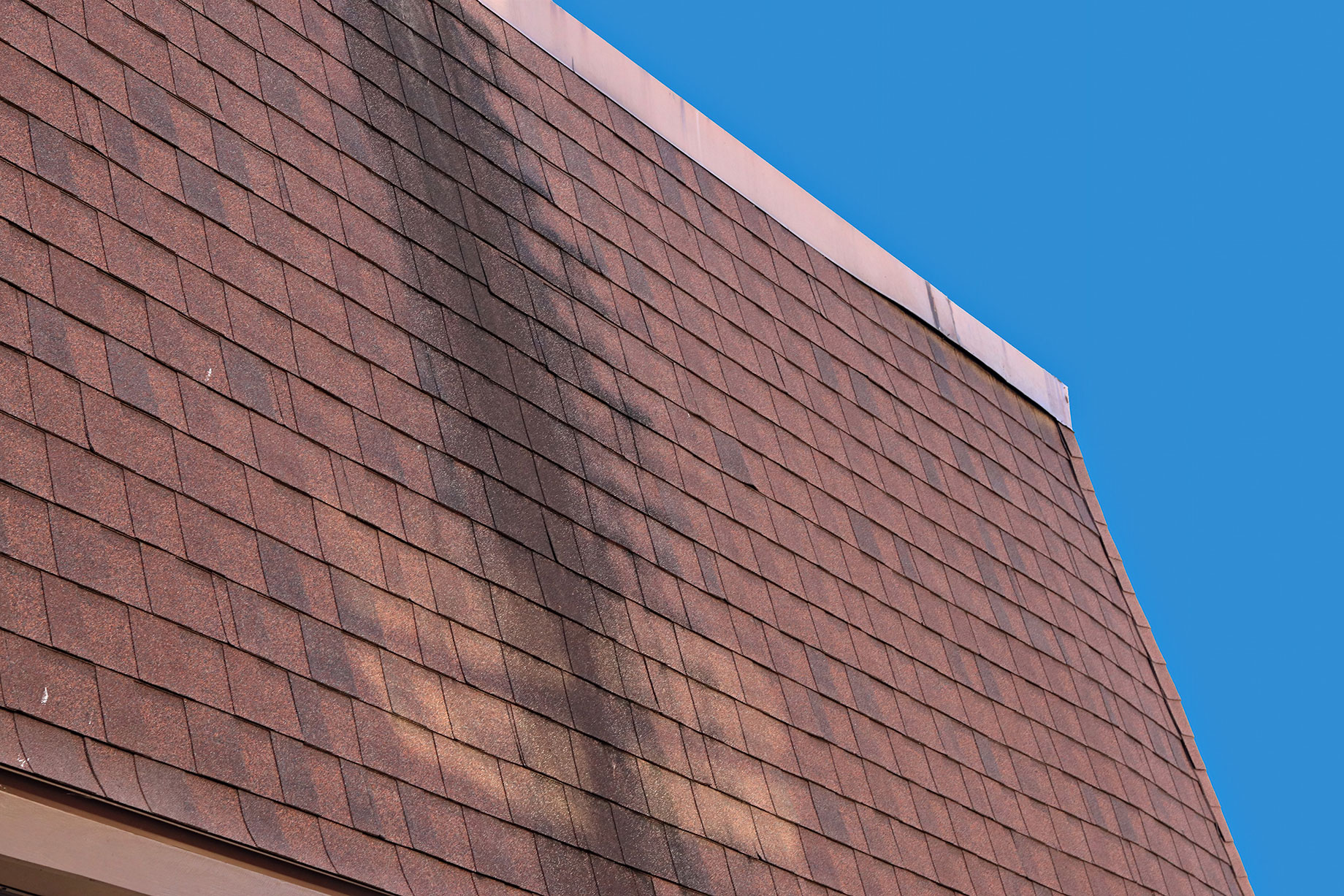
In hot-summer regions, your roof works like a giant sunshade. When it’s clean and bright, it reflects a meaningful share of the sun’s energy. When it’s streaked with dark stains, it absorbs more heat, warms the attic, and makes your air conditioner run longer. That translates directly into higher summer energy bills and a less comfortable home.
Beyond curb appeal, your roof’s surface condition plays a critical role in home performance. Many homeowners don’t realize that those dark streaks across shingles can silently increase indoor temperatures and energy consumption. Understanding how and why these stains form — and what you can do to remove them — is key to improving energy efficiency, protecting your investment, and keeping your living spaces cooler throughout the year.
Why Roof Color and Cleanliness Matter
A “cool roof” reflects more sunlight and absorbs less solar heat than a conventional, darker roof. On a sunny summer afternoon, a typical dark roof can reach around 150°F (65°C), while a reflective roof may stay up to 50°F (28°C) cooler— reducing heat entering the living space and cutting AC use.
Researchers at the Lawrence Berkeley National Laboratory explain that dark surfaces absorb sunlight, increasing cooling energy use, whereas higher-albedo (more reflective) roofs keep both the roof and the air inside cooler. Field studies have shown double-digit percentage reductions in summertime electricity usage after improving roof reflectance.
What Causes Those Black Streaks?
In much of North America, the common culprit is the airborne algae Gloeocapsa magma. It thrives in warm, humid environments, producing brown-to-black streaks across shingles. While often dismissed as a cosmetic issue, these stains darken the roof surface and reduce its solar reflectance — the very property that helps a roof stay cool.
The Energy Penalty of a Stained Roof
Research in Florida and other warm regions shows that boosting roof reflectance can cut cooling energy use by 18–26%. When reflectance is lost to soiling and biological growth, the home’s cooling demand rises — especially in hot, sunny climates where air conditioners work hardest. In short, the darker and dirtier your roof becomes, the more you’ll pay in energy costs.
Cleaning Restores Reflectance
Studies from building-science labs have found that gentle cleaning and algae removal can restore a roof’s solar reflectance close to its original level, reversing much of the heat-absorbing effect of stains. A proper cleaning doesn’t just improve curb appeal — it helps your roof perform better in warm weather.
Maintenance Tips for a Cooler Roof
- Schedule professional cleanings when streaks appear. Avoid high-pressure washing that can damage shingles; use gentle, manufacturer-recommended methods.
- Trim nearby trees to reduce shade and moisture buildup that encourages algae or moss growth.
- Consider algae-resistant shingles or coatings when reroofing to preserve reflectance.
- Keep gutters and drainage clear so water doesn’t pond, since standing moisture accelerates staining and heat absorption.
If your roof is already showing dark streaks and you’ve noticed higher summer energy bills, it may be time for a professional cleaning. Homeowners in Maryland can contact trusted roof cleaners in Owings Millsto safely remove algae and restore reflective performance.
Final Thoughts
In warm climates, a clean and reflective roof is more than just an aesthetic upgrade — it’s an energy-efficiency investment. Keeping stains at bay helps your roof deflect sunlight, ease the load on your cooling system, and lower your energy bills throughout the hottest months of the year.